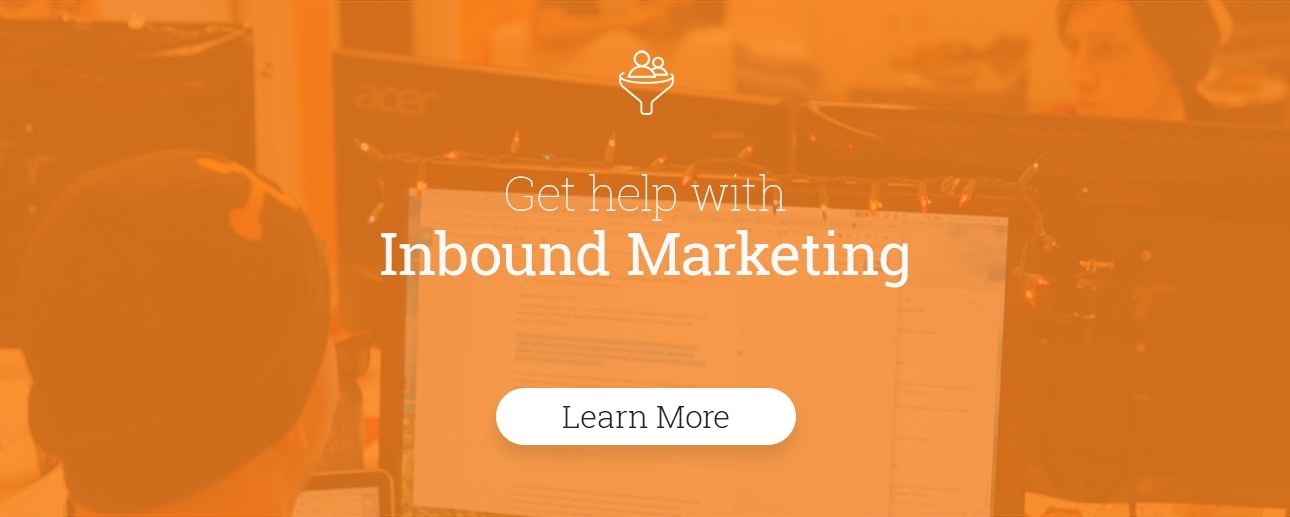Are you getting lower than average conversion rates on your landing pages? We have all been there: you've spent hours designing a complete marketing campaign– it has all the bells and whistles, but you just aren't getting the results you'd like.
Take a breath. It's so frustrating but don't worry, you can turn it around. Follow these steps and you’re sure to see an increase in conversions.
1. Have a Clear Purpose
Minimize distractions, you created this page for a reason, now make sure people understand that. That's why landing pages don't have navigation menus. Don't let people become distracted by elements other than the ones you designed to make people move down the funnel.
Address pain points! What says, “I understand your pain and I’m here to help more than… well, saying it.” Your landing page should exist to accomplish one goal, do you know what it is? If not, your customers won't know either. Simplify the page so the purpose is clear at a glance. Easy ways to do this is to make sure each page has only one offer and one way to convert. Don't have multiple forms or offers, and you will absolutely see more conversions.
By creating landing pages that focus on one goal at a time, you will improve your conversion rate.
2. Craft a Compelling Flow of Text
Content is king, no matter how beautiful the page or images, without compelling content people won't stay or convert. People won't stay on the page, bouncing in a few seconds if they aren't satisfied with what your offering. Give them a reason to dive into the details, be convincing, succinct and authentic to your brand.
No matter how pretty your page, users will not convert if your landing page content is not captivating.
3. Headlines Matter
Write badass headlines. On average, 80% people will read headline copy, but only 20% will read the rest. Grab the attention of the reader right away by using:
- Numbers: “5 Simple ways to Increase Conversions” By setting a list people can easily follow along, estimate the investment of time and have something to look forward to and reference later.
- Keywords: If people see their pain points or interest in the title, they are more likely to read on as they see it as more valuable and relevant to them. Don't overstuff the headline, however, figure out what's important and use the most relevant keywords.
- Promise Something: “Increase Your Conversions” Give people something to look forward to.
- Use Adjectives: Spice up your titles, from “Increase Your Conversions” to “Essential Tips for Increasing Conversions”, make your headlines captivating with adjectives.
- Negative Words: “Avoid these Simple Mistakes & Increase Conversions” People want to avoid failure, this is a great way to entice further examination.
Keep your headlines bold and short to get your user’s attention instantly. There is no one size fits all way to guarantee success, but these best practices are working for a reason. Keep the title under 70 characters so it doesn't get cut off in search engine results. The last thing your incredible title needs is to be cut in half.
4. Use CTAs That Clearly Inform Users to Take Action
Issue an unmistakable call to action, people don't mind being told what to do. Download our e-book, sign up or make an account. If people know what's expected of them, they can decide if your offer is worth their action.
CTAs (calls to action) are the most important element on the landing page from the marketers point of view, as it’s the way you get users to take action and provide value to your campaign while moving them down your funnel. It's more than just a button or form, everything about it matters.
Color: The CTA has to stand out. Make sure it contrasts in color to the background. Some research has found orange, blue or green CTAs work best, but the best tip is to A/B test different colors to see if you are getting higher conversion rates.
Position on the page: Don't make people scroll to see it and don't hide it in text or on the corners of the page. Make sure it is clear to see can can be recognized at a glance.
Size: Ensure the size of the button is not so small that users lose sight of it or so big that it looks cheap or scammy, scaring them away. It should make sense within the layout of your page. Experiment with pictures, or other elements they dont always need to be a solid color button.
Finally, include a sense of urgency driving up the need and desire of users increasing conversion rates.
5. Use the Right Images
Include images and videos, as these are shown to increase time on page and conversion rates.
Images help evoke strong emotions faster than text, they can also convey information much faster than text while inferring complicated context you can't get across any other way.
To encourage users to take action, videos are invaluable in their ability to demonstrate functionality and usefulness. It’s important that all images used in the landing page, from the header image to the those used within the page, are in sync with the content to make the messages stand out.
Pair powerful imagery with compelling content, to simulate desire and motive conversations leading to a successful landing page.
6. Highlight the Value Proposition
List the benefits and keep the most important elements above the fold. The reason people should convert on your page should be front and center.
Highlight your unique selling points and offer tangible value to get their attention. Your value proposition should leave them no doubt as to why they need to be opting in for your service.
Keep your buyer personas in mind when you design your page and value proposition for your product/service. Doing this will show you understand your target audience’s pain point, motivating people to choose you as the answer they’ve been looking for.
Highlight your value proposition to get your user’s interest, offering more value to them than they need to exchange for it in your conversion form.
7. A/B Test Your Landing Pages
Still not working? Try something else! Testing is a mandatory step for improving your landing page conversion rate. A/B testing lets you try various landing page layouts and content to understand which works best for your target audience.
It’s hard to determine what will resonate with your users, so A/B testing is the best way to find it.
Try changing:
- Amount of text used on the page, sometimes less is more and sometimes people need a little more convincing. Don't guess, try both and see what works.
- The amount and type of images and videos; the placement size and content of images and videos will drastically change how people view a page. Try to make the pictures as relevant as possible.
- Many experts say colors have psychological effects on people, white representing cleanliness, red being danger, green being natural and healthy. Maybe another color will just help the text stand out more. Every page doesn't need to be brand colors, mix it up.
- If you can, try different offers or conversion types: Form, Sale, Subscription, Call, Chat, Download, Contact Form Appointment, Membership.
8. User Experience, Responsiveness & Loading Time Matter
If you have followed all these tips so far, you have: spent a lot of time and care crafting the perfect landing page with relevant images and content, finally you can asdkfhjrzz... 404 Error. Yes, double check your links. Are they working? Does your form deliver the right content? Are your image file sizes too large? Are you using the right thank you page?
All your hard work won't count for anything if your loading time is high. Your landing page should load within a seconds. 53% of people will leave a mobile page if it takes longer than 3 seconds to load, so make sure your file size isn't too large. Fix any issues which is slowing your page to not only improve your page speed but also to help SEO.
Landing page load speed will make or break your campaign, so ensure it loads within a few seconds.
9. Optimize Your Form Fields
Gathering user information is usually the focal point of a form submission landing page. Your content will draw people in and convince them to choose you, but a bad form will act as a filter, limiting the amount of people taking action. All your convincing content and images will be useless if users don’t trust the form.
If they don't trust the form to protect their privacy, think it’s asking to much personal information, or just takes far too long to submit, your conversion rates will be very low.
A general rule of thumb is that if you’re not targeting a high value bottom of the funnel client, stick to asking for the customer’s email address.
Another tip is breaking up the submission over multiple pages. This method leads users to take actions without you asking for any details. Then, once they are committed, you can ask for simple contact information. As long as you keep the process fast and simple, this could help conversion rates.
Studies show users are more liberal in giving out their email address when compared to their contact number. So if you’re asking for a phone number, make sure that the value proposition is worth it and you let people know this will remain very confidential.
Now that you’re a landing page expert, Impulse Creative is here to guide you on to the next marketing milestone.





